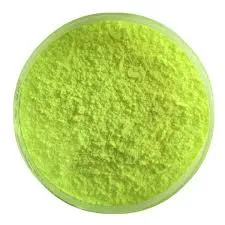Exploring 6-Amino-1,3-Dimethyl-5-Nitrosouracil A Multifaceted Chemical Compound
Introduction
6-Amino-1,3-dimethyl-5-nitrosouracil (often abbreviated as DMNU) is a unique and intriguing compound that has captivated the interest of chemists and biologists alike. Part of the larger family of uracil derivatives, DMNU possesses peculiar properties that make it a subject of study in various scientific domains. From its structural features to its potential applications, understanding this compound is essential for advancing research in medicinal chemistry and agriculture.
Structural Characteristics
DMNU’s structure is a modified uracil, a key nucleobase in RNA. With the presence of an amino group at the 6-position, and two methyl groups at the 1 and 3 positions, alongside a nitroso group at the 5-position, DMNU’s arrangement showcases how substitutions on a basic structure can lead to significantly different chemical behaviors. The modifications influence not only its biological activity but also its solubility, stability, and reactivity.
The nitroso functional group is particularly noteworthy; it can undergo reactions that are fundamentally different from typical amine or methyl groups. This feature opens avenues for exploring DMNU in various chemical reactions, including nitration and formation of azo compounds. The presence of these functional groups contributes to the compound’s characteristic as a potential pro-drug, where the active form is released once inside a biological system.
Biological Significance
One of the most fascinating aspects of DMNU is its potential biological significance. Studies have revealed that compounds exhibiting structural similarities to DMNU can influence biological systems in various ways. For instance, some derivatives have been explored for their anti-cancer properties, while others have shown efficacy in antibacterial applications. The mechanism of action may involve interference with nucleic acid synthesis, promotion of apoptosis in cancer cells, or alteration of cellular signaling pathways.
Given the rise of antibiotic resistance, the search for novel antibacterial agents is paramount. Research into DMNU and its derivatives may provide a new perspective on addressing these pressing issues. By modifying the existing structure or synthesizing novel analogs, scientists can explore a wider array of pharmacological properties and therapeutic applications.
6-amino-1,3-dimethyl-5-nitrosouracil

Synthetic Pathways
The synthesis of DMNU may involve various chemical strategies, often starting from uracil or other pyrimidine derivatives. Common methods include substitution reactions, where the nitroso group could be introduced at the 5-position through nitration reactions. Alternatively, the introduction of amino and methyl groups can involve nucleophilic substitutions. Achieving a high yield with specific regioselectivity remains a challenge, but ongoing advancements in synthetic methodologies continue to enhance the efficiency of creating such specialized compounds.
Applications in Agriculture
In addition to its potential medicinal applications, DMNU also piques the interest of agricultural scientists. There is a growing focus on developing nitrogen-containing compounds for use as herbicides or fungicides. The structural features of DMNU may lend themselves to targeting specific enzymatic pathways in harmful plants or fungi, thus offering a new approach to crop protection. As sustainable agriculture becomes increasingly important, the search for environmentally friendly and effective agrochemicals remains a priority.
Future Directions
Looking ahead, the future of DMNU research holds exciting possibilities. Further studies into its mechanisms of action, along with structure-activity relationship (SAR) investigations, could reveal new therapeutic targets. Additionally, interdisciplinary research combining chemistry, biology, and agriculture may yield innovative applications that were previously unimagined. Moreover, advancements in computational chemistry could aid in the design of DMNU derivatives with optimized properties, enhancing the compound’s efficacy and safety profile.
Conclusion
6-Amino-1,3-dimethyl-5-nitrosouracil is more than just a chemical compound; it is a key that could unlock new avenues in medicinal chemistry and agricultural science. As researchers continue to explore its unique properties and potential applications, DMNU may very well become a valuable tool in the fight against diseases and pests. The ongoing investigations into its synthesis, biological activity, and environmental impact will undoubtedly expand our understanding of this fascinating compound and its role in science and industry.

